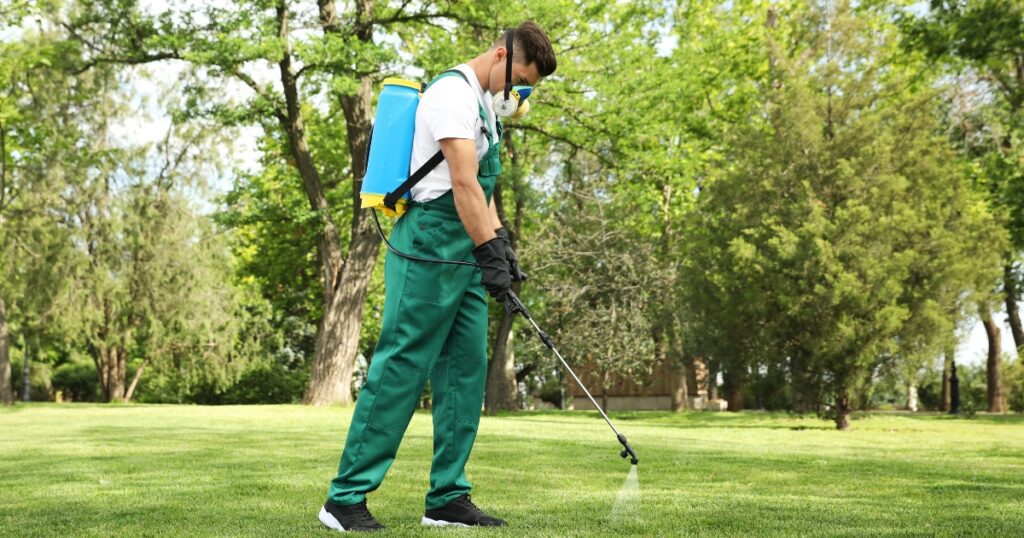
As pet owners, we all want to ensure that our furry friends are safe and healthy. Unfortunately, when it comes to pest control, traditional methods can be dangerous for pets. In Dallas, where pests like rodents, mosquitoes, and ticks are prevalent, it’s essential to prioritize pet-friendly pest control measures.
The Negative Effects of Traditional Pest Control Methods on Pets
Traditional pest control methods often involve the use of toxic chemicals that can cause harm to pets. For example, common pesticides like organophosphates and carbamates can interfere with a pet’s nervous system and lead to symptoms like seizures, vomiting, and even death in severe cases.
In addition to direct exposure from contact with treated surfaces or products, pets can also be affected by secondary poisoning. If a pet ingests an insect or rodent that has consumed poison bait or has been sprayed with pesticides, it can become sick or even die.
The Importance of Pet-Friendly Pest Control Dallas
Given the prevalence of pests in Dallas and the potential dangers associated with traditional pest control methods for pets and their humans alike, finding safe alternatives is crucial. Fortunately, there are many options available that prioritize the well-being of both pets and people.
Pet-friendly pest control methods use non-toxic ingredients or low-toxicity products that are designed to target pests without harming other living creatures. These methods may include physical barriers like mesh screens or traps as well as natural repellents such as essential oils or boric acid.
Choosing pet-friendly pest control measures is not only important for our four-legged family members’ safety but also for our own health and well-being. By selecting methods that avoid toxic chemicals whenever possible while still effectively managing pests, we can create a safer and healthier environment for everyone in our homes.
RELATED: Chemical-Free Pest Control in Dallas Fort Worth
Common Pests in Dallas and Their Impact on Pets
Pets are vulnerable to various pests found in Dallas, Texas. These pests can cause discomfort, disease, and even death to pets if not controlled quickly.
Some common pests that are frequently found in Dallas homes include fleas, ticks, mosquitoes, ants, cockroaches, rodents, and bedbugs. Fleas are the most common pest infestation for pets in Dallas.
They can cause severe itching and skin irritation. When fleas bite a pet’s skin continuously, it can lead to anemia due to blood loss from the bites.
Fleas also transmit tapeworms which can lead to weight loss and other health issues. Ticks are another pest that commonly affects pets in Dallas.
Ticks carry diseases such as Lyme disease, which can be passed onto pets during a bite. Infections caused by these ticks manifest as fever or lethargy initially before progressing into more severe issues like kidney disease or joint pain.
Mosquito bites pose a threat to dogs when they carry heartworm larvae which is one of the most deadly parasites for dogs in the Dallas area. Heartworm infestation can result in lung infection and finally, heart failure when left untreated.
Traditional pest control methods like chemical sprays present potential risks for your pets, such as allergic reactions or poisoning from ingesting toxic chemicals from laced baits or traps set out by exterminators. Preventing these pests is vital for the health of both your family members & furry friends!
Pet-Friendly Pest Control Methods
As pet owners, it is important to keep our furry friends safe from harm. That’s why pet-friendly pest control methods are becoming increasingly popular among homeowners in Dallas.
These methods are designed to eliminate pests without harming pets or the environment. In this section, we will discuss some of the most effective pet-friendly pest control methods available in Dallas.
Bait Stations
Bait stations are a popular and effective method for controlling rodent populations without harming pets or other wildlife. These stations contain bait that is attractive to rodents, such as peanut butter or cheese, and once the rodent ingests it, they will die within a few days.
The bait is contained within the station, making it inaccessible to pets and other animals. Bait stations are highly effective because they target only rodents and not other animals that may be present in your home or yard.
They also do not use harmful chemicals that can cause harm to your pets. However, it’s important to place them properly so that pets cannot access them.
Biological Controls
Biological controls involve the use of living organisms to control pests. This method is eco-friendly and safe for pets as it uses beneficial insects such as ladybugs and nematodes to prey on pests like aphids, spider mites, and whiteflies.
These beneficial insects feed on the pests by laying eggs inside their bodies, which eventually results in their death, eliminating them from your home or garden. Biological controls are chemical-free, which makes this method safer for your family, including your pets as well as ensures no hazardous residue is left behind after treatment.
Pesticide-Free Traps
Pesticide-free traps work like sticky boards but use natural instead of synthetic adhesive which makes them safe for your pets. They come in different sizes and shapes to accommodate different pest types. These traps do not involve any use of chemicals or poisons and are an excellent way to control pests in a pet-friendly way.
However, it’s important to check the traps regularly and dispose of any captured pests as soon as possible to discourage the development of bacteria or general discomfort for your pets. Pet-friendly pest control methods offer a safer alternative to traditional pest control and are effective at reducing pest populations without harming pets.
The above three methods have been proven effective over time and are readily available in Dallas from various professional service providers. Take the time today to research these methods further so as to keep your furry friends safe while still keeping pests at bay.
Choosing a Pet-Friendly Pest Control Service
When it comes to choosing a pest control service provider, pet owners should prioritize finding a company that offers pet-friendly services. This means that the company uses methods and products that are safe for pets and takes steps to ensure the well-being of pets during and after treatment.
Tips for choosing a pet-friendly pest control service provider
One of the first things pet owners should do when looking for a pest control service is to ask about their experience with treating homes with pets. A company with experience in handling pets during treatments will likely have procedures in place to minimize any risks to the animals.
Pet owners should also research the reputation of potential service providers by reading online reviews from past customers. Look for reviews specifically mentioning how well they treated pets during treatments.
Price is another important factor to consider when selecting a pest control service. However, price should not be the only deciding factor, as it’s crucial that homeowners choose a reputable company with experienced technicians who prioritize safety and effectiveness over cost alone.
Factors to consider when selecting a service provider
In addition to experience, reputation, and pricing, there are several other factors that homeowners should consider when selecting a pet-friendly pest control service provider:
- The types of pests they specialize in treating
- Their availability for appointments or emergency services
- Their customer service and communication practices
- Their level of certification or licensing
- Their guarantee or warranty on services rendered
By considering all these factors together, homeowners can make an informed decision about which pest control service is right for them and their furry friends. Remember – price should not be the only deciding factor. The safety and well-being of pets should always come first.
RELATED: Going Green in Dallas: The Top Reasons to Choose Organic Pest Control
DIY Pet-Friendly Pest Control Measures
Sealing Cracks and Holes
When it comes to preventing pests from entering your home, one of the most effective methods is sealing any cracks or holes that may serve as entry points. Even the smallest openings can be an invitation for pests like ants and spiders to make their way into your home.
To prevent this from happening, inspect all areas of your home for any potential entry points, including around windows and doors, utility lines, and pipes. Once you have identified these openings, use caulk or weather stripping to seal them off.
Keeping Food Stored Properly
Pests like rodents and cockroaches are attracted to food sources in your home. To deter them from coming inside, make sure all food items are stored properly in airtight containers and kept off the floor. Keep your kitchen clean by wiping down counters after cooking or eating, sweeping floors regularly, and taking out the trash daily.
Maintaining Cleanliness
Maintaining cleanliness throughout your home is one of the simplest yet most effective ways to prevent pests from entering. Regularly vacuum carpets and sweep floors to eliminate crumbs or debris that may attract pests like ants or cockroaches. Additionally, keep clutter at bay by organizing common areas in your home, such as closets or storage spaces.
By implementing these simple DIY pest control measures throughout your home, you will not only help keep pests at bay but also ensure that your furry friends remain safe from harmful chemicals commonly used in traditional pest control methods. These pet-friendly alternatives are easy to implement on an ongoing basis without requiring much time or effort on your part.
So why not give them a try? Your pets will thank you for it!
Frequently Asked Questions
Can dogs be around pest control?
Dogs can be around pest control, but it’s important to follow safety guidelines and keep them away from treated areas until it’s safe. Some pest control methods may require the temporary relocation of pets during application.
Is pest control poisoning dogs?
Pest control can potentially poison dogs if they come into direct contact with or ingest the pesticides. It’s crucial to use pet-safe pest control products and ensure that dogs are kept away from treated areas until the products have dried or settled.
Can dogs smell pests?
Dogs have a keen sense of smell and can often detect pests such as rodents or insects. Their ability to detect pests can be beneficial in identifying infestations and targeting pest control efforts.
Is there pest control safe for pets?
There are pest control methods that are safe for pets. Many companies offer pet-friendly or pet-safe pest control options that utilize natural ingredients or low-toxicity pesticides, minimizing the risk to pets while effectively controlling pests.
What if my dog licks pest control?
If your dog licks pest control products, contact a veterinarian immediately. The ingestion of pesticides can be toxic to dogs, and prompt medical attention is necessary to assess the situation and provide appropriate treatment.
How do I protect my dog from pesticides?
To protect your dog from pesticides, keep them away from treated areas until it is safe. Consider using pet-safe pest control methods, create physical barriers to prevent access to treated areas, and consult with a veterinarian for additional guidance on protecting your dog from potential pesticide exposure.
Conclusion
Pet owners in Dallas must prioritize the safety and well-being of their furry friends when dealing with pest problems. Traditional pest control methods can be harmful to pets, causing them to experience a range of health problems or even death.
Fortunately, there are many pet-friendly pest control methods available today that are effective and safe for pets. It is important to note that pests can cause significant damage to homes and property if left unchecked.
However, this should not come at the cost of our pets’ safety. Homeowners should strive to find pet-friendly pest control solutions that effectively eliminate pests while keeping their furry friends out of harm’s way.
RESOURCE: Environmental Protection Agency: Citizens’ Guide to Pest Control and Pesticide Safety






